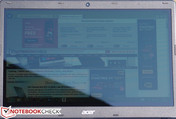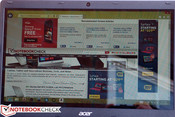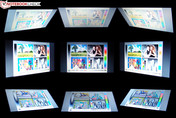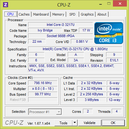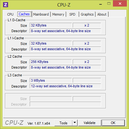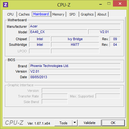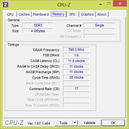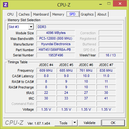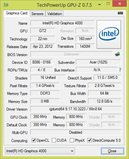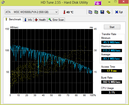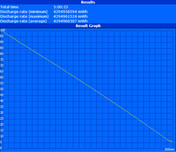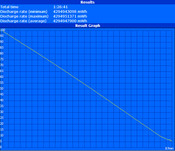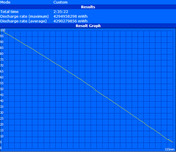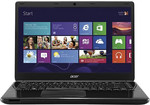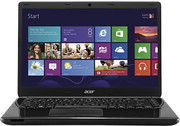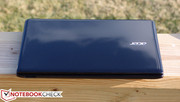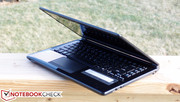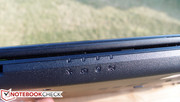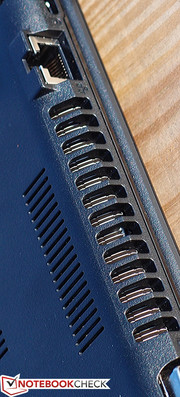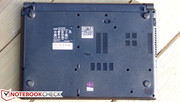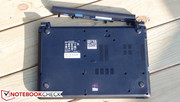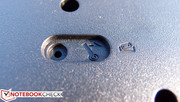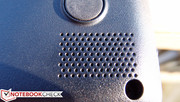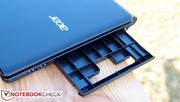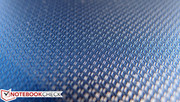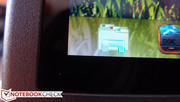Review Acer Aspire E1-470P-6659 Notebook

For a short while, at the front end of the technology curve, locating an inexpensive touchscreen notebook running Windows 8 and a decent set of specs was a difficult task. Those consumers looking for just that will be pleased to know, however, that the options are becoming ever more numerous, starting with Acer’s latest.
Acer’s E-series of notebooks represents their most affordable offerings, starting at just below $400 street price ($450 MSRP—but as of this writing, our Aspire E1-470P-6659 is available at Best Buy for just $380). While the E1-470P-6659 is certainly not a high-end machine, its specs still manage to trump that of most other similarly-priced budget models, however, especially when you consider the inclusion of a touchscreen with full-blown Windows 8. You’ll find an Intel Core i3-3217U CPU with 4 GB DDR3L RAM alongside a rather generous 500 GB HDD—which is difficult to criticize given the price. But specs are only part of the equation; can the E1-470P emerge from our rigorous testing routine unscathed?
Case
Naturally, those in the market for a budget notebook are not likely to expect a premium case design. Clad with a shiny black plastic lid meeting a matte plastic edge wrap and underside, the Aspire E1-470P isn’t looking to impress here. The shiny black plastic continues to flow across the top of the base unit, exuding a thoroughly budget-grade appearance. There’s no metal to be found in the design, but the plastic casing at least feels relatively rigid; thanks to the lack of maintenance hatches on the bottom and the single piece of glossy plastic that embodies the palm rest and keyboard surround (essentially, the entire top of the base unit), the E1-470P doesn’t exhibit a lot of give except in the very center of the base unit and under relatively heavy pressure. The upside of this thoroughly plastic construction is weight: at just 1.916 kg, this is a fairly portable 14-inch machine.
The display lid also has some rigidity to it, though torsion resistance is only average as it can be fairly easily twisted from side to side. Distortions are clearly visible on the LCD panel when pressure from behind is applied, but the lid closes tightly against the base unit and features a series of eight rubber pads that help to improve its stability in the closed position, rendering panel damage less likely while the unit is in storage. The hinges, meanwhile, communicate a fair degree of stiffness, but they manage to allow a bit of wobble while typing or tapping—something which is frequently annoying when a glossy screen finish is involved.
You might have caught mention earlier of the lack of maintenance hatches, and unfortunately, unlike some models which provide access to internal components via an easy-to-remove bottom panel, the E1-470P has no interest in making maintenance or upgrades easy. Instead, Acer’s support team has stated on their forums that the unit is not meant to be consumer upgradeable or serviceable, and that even such normally trivial operations as RAM replacements and upgrades are not supported. What you buy is what you get with the E1-470P.
Connectivity
For its class, the Aspire E1-470P provides a good number of ports for connectivity. Most notably, you’ll find three total USB ports (one of which is USB 3.0), VGA, HDMI, and a card reader. Business users will be pleased to hear that there’s also Gigabit Ethernet, which sits directly adjacent to the Kensington Lock port. While there is technically room for an optical drive (and even a built-in bay), the E1-470P-6659 ships with only an empty plastic spacer in place of one.
Thanks to the massive amount of linear real estate consumed by the empty optical drive bay, the rest of the ports are crammed together pretty uncomfortably, making the connection of larger devices (such as two large USB devices or an HDMI cable adjacent to a USB 3.0 device) a bit of trouble. Fortunately, with the exception of the front-mounted SD card reader, all of the ports are split between the left and right sides of the notebook, which makes for easy access.
Communication
The E1-470P features a Qualcomm Atheros AR9565 single-channel 1x1 WLAN adapter capable of up to 150 Mbps. Throughout our time with the unit, we subjectively noted average at best connectivity, with signal strength and speeds below that of our more premium-grade Dell Latitude and Lenovo ThinkPad models. Still, we experienced no problems with disconnections or other wireless stability issues. This adapter also includes Bluetooth 4.0 for connection with compatible nearby devices. The biggest plus for business users, however, will certainly be the inclusion of Gigabit Ethernet (Realtek controller), which is less commonly seen in models of this price point.
Accessories and Warranty
The E1-470P comes with a 65 W adapter of reasonable size manufactured by Delta Electronics. A standard 12 month depot warranty is also included.
Input Devices
Keyboard
One of the most unexpected strengths of the E1-470P is its keyboard, which—rare as it is within the budget notebook market—is surprisingly solid and comfortable to use. Granted, it can’t quite compare to the luxury of a top-end Lenovo ThinkPad, HP Spectre, or Dell Latitude keyboard, but the sheer fact that it’s even mentionable in the same breath is rather shocking. It’s a Chiclet-style model, featuring comfortable key spacing and logical organization and styling. All of the keys are easy to operate, including the half-height arrow keys, which only take a bit of getting used to. The keys aren’t afflicted by the same sort of rattling effect one finds with most inexpensive notebook keyboards.
The stroke is also comfortable, with fairly low actuation force and a mostly quiet but still quite palpable stop. Travel is more than sufficient as well, making each keystroke easy to identify and providing great overall feedback. The matte key surfaces are smooth but slightly textured, and unlike the plastic filling the spaces between them, they don’t retain fingerprints. While it’s a notch below the best keyboards we’ve tested, this is a great keyboard overall; about the only thing completely missing is backlighting, which is hardly a surprise given the price point.
Touchpad
The touchpad, on the other hand, is absolutely nothing special. It’s manufactured by Alps Electric, and using the supplied driver version 8.100.2020.116, we found gestures to be occasionally finicky, but overall operation to be fairly smooth (yet unremarkable). Accuracy wasn’t much of an issue, and though not everyone will love it, the textured surface is at least superior to smooth-finished models that are hampered by humid conditions (thus making finger gliding a challenge). More objectively frustrating is the ever-irritating clickbar at the bottom of the pad (a single piece of plastic whose far left and right sides represent the two mouse buttons); pressing anywhere but on the far edges of this bar will not register a click without significant pressure, meaning that right-clicking while using your thumb requires a bit of practice and more acrobatic dexterity than is ideal.
Touchscreen
The E1-480P’s third and final input method—again, impressive for its class—is the touchscreen, which supports 10-point multitouch and registers gestures as well as the best models. We experienced no problems with multitouch input and gestures such as pinch-to-zoom and drag scrolling, and we found navigating the system using the touchscreen as comfortable as on much more expensive Ultrabooks.
Display
The Aspire E1-470P-6659’s 14-inch 1366x768 (768p) HD glossy TN panel was most certainly an area of compromise to reach the low price point, but it’s to be expected. Factoring out to just 112 PPI and lacking the IPS technology of premium Ultrabooks and convertibles, it pales in comparison to most of its higher-priced peers. Subjectively, the display appears washed-out with a high black level (and thus mediocre contrast).
| |||||||||||||||||||||||||
Brightness Distribution: 81 %
Center on Battery: 228 cd/m²
Contrast: 248:1 (Black: 0.921 cd/m²)
ΔE Color 11.82 | 0.5-29.43 Ø5
ΔE Greyscale 11.75 | 0.57-98 Ø5.3
35.66% AdobeRGB 1998 (Argyll 1.6.3 3D)
38.22% AdobeRGB 1998 (Argyll 2.2.0 3D)
55.3% sRGB (Argyll 2.2.0 3D)
36.97% Display P3 (Argyll 2.2.0 3D)
Gamma: 1.89
Predictably, our measurements corroborate these impressions. We measured average brightness of 219 cd/m², with a peak of 238.9 cd/m² in the upper-right quadrant and a low of 193.4 cd/m² in the opposite corner. That leads to a brightness distribution of 81%, which is decent, but not terribly consistent. Meanwhile, the black value of 0.921 cd/m² is quite high indeed, and the resulting contrast ratio of 248:1 is consequently disappointing. The maximum brightness remains the same even while operating on battery.
In terms of sRGB coverage, things are as unimpressive as the washed-out appearance would suggest. Our measurements and calculations yield just 51% coverage of the spectrum, which is near the bottom of our typical measurements even for notebooks of this class. On the other hand, it’s still not that far below the average figures, and most users aren’t likely to mind given the notebook’s intended market.
CalMAN 5 provides another perspective with consonant results. With an Average DeltaE of 11.82 (ideal: 0) and Total Gamma of 1.89 (ideal: 2.2), this notebook is clearly not meant for color accuracy. Every single color on the spectrum experiences a deviation of 5 or greater.
Outdoors, in any sort of sunlight, the lackluster brightness and contrast values and glossy screen finish quickly render the E1-470P useless. In the shade, it’s possible—albeit not comfortable—to manage. Further complicating matters are the screen wobble while typing or tapping and the thoroughly mediocre TN viewing angles.
Performance
Considering that the Aspire E1-470P-6659 is the lowest cost of the bunch, it’s not surprising that it also includes the weakest CPU. Directly from Acer, the lowest option currently available is actually the 15-inch Aspire E1-532P-4819 ($450 MSRP), which includes an Intel Pentium 3556U, whereas the most expensive model, the Aspire E1-572P-6403 ($700 MSRP), packs an i5-4200U CPU and bumps the RAM and hard drive capacity up to 6 GB and 750 GB respectively. Our model (available at Best Buy for under $400) features an Intel Core i3-3217U 1.8 GHz CPU, which is an Ivy Bridge ULV model manufactured using 22 nm architecture and sporting a 17 W TDP. Accompanying the CPU is 4 GB of DDR3L-1600MHz RAM via a single Hynix SODIMM. The RAM is not user-replaceable or upgradeable.
Compared to other notebooks with the same CPU, the Aspire E1-470P-6659 performs admirably. The results of 957 seconds in wPrime 1024M and 1101 seconds in superPi 32M are both below the average scores for the i3-3217U of 1014 and 1103 seconds, respectively (lower is better). Meanwhile, CineBench R11.5 64-bit xCPU provides a result of 1.76, which is above the current average of 1.7.
To check whether performance degrades while operating unplugged, we performed a second run of 3DMark 11 and found that the score of 538 was consistent enough with our baseline of 556 to dispel any concerns. We also assessed the notebook’s ability to stream real-time audio and video using DPC Latency Checker and found no problems.
Processor
The Intel Core i3-3217U CPU performs most comparably to a Core i3-4010U in single-threaded operations, whereas multithreaded performance is closer to a Sandy Bridge i5-2467M. Of course, the Haswell-based i3-4010U features a lower TDP of 15 W and still manages better performance, which speaks to the improved efficiency of the newer processors. Still, this is hardly budget performance for a machine with a price below $400; in fact, it’s quite possibly the best deal going for a cheap touchscreen PC running Windows.
System Performance
While CPU performance is impressive for the price, general system performance is nothing special. We received scores of 4660 and 2151 in PCMark Vantage and PCMark 7 respectively, which are thoroughly pedestrian results, but typical for a notebook that lacks any sort of solid-state storage (whether primary or caching). In comparison, the AMD-equipped HP Pavilion Sleekbook 15z-b000 only managed a score of 1505 in PCMark 7, while Acer’s own Aspire M5-481PT-6644 turned in a result of 4052 (thanks to the inclusion of a 20 GB SSD cache drive). While it’s nowhere nearly as snappy as modern Ultrabooks, the E1-470P-6659 fortunately never feels overly sluggish, either.
| PCMark Vantage Result | 4660 points | |
| PCMark 7 Score | 2151 points | |
Help | ||
Storage Devices
Examining the storage situation in a bit more depth brings us to the mechanical drive at the core of the conversation: a Western Digital WD5000LPVX, which is a 500 GB 5400 RPM drive with a 7 mm height. This is a very common drive and its performance is quite good in most cases in comparison to other similar models. In our case, we saw an 83.2 MB/sec Transfer Rate Average in HD Tune alongside 107.4/106.6 MB/sec Sequential R/W in CrystalDiskMark. It is worth reiterating that should you encounter a problem with the drive or wish to upgrade, the Aspire E1-470P does not provide that option; without significant disassembly, you are stuck with what you get.
GPU Performance
The Intel Core i3-3217U included in the Aspire E1-470P features integrated Intel HD Graphics 4000 clocked at 350 MHz up to 1050 MHz with Turbo Boost. Gaming on ULV integrated graphics is admittedly always a bit of a stretch, but it never hurts to examine what is possible.
In terms of synthetic benchmarks, performance in 3DMark 06 and 11 (with scores of 3605 and 556, respectively) was middle-of-the-road, beaten by the MSI S30-i3U465 (4291 in 3DMark 06, but nearly the same with 554 in 3DMark 11) and the IdeaPad U510 MBM62GE (3893 in 3DMark 06), but far better than the ASUS VivoBook S200E-CT182H (1605 and 293, respectively), which experienced significant throttling. When we turned to actual game benchmarks, we were greeted with predictable results: even on the lowest settings, most modern games are unplayable—but older games and lighter-weight options (such as StarCraft II or Diablo III, for instance) are most likely palatable with detail held low.
| 3DMark 03 Standard | 8535 points | |
| 3DMark 05 Standard | 6319 points | |
| 3DMark 06 Standard Score | 3605 points | |
| 3DMark Vantage P Result | 2488 points | |
| 3DMark 11 Performance | 556 points | |
Help | ||
| low | med. | high | ultra | |
| Metro 2033 (2010) | 12.67 | 5.33 | 4.67 | |
| BioShock Infinite (2013) | 20.58 | 11.56 | 9.67 | 3.41 |
Emissions
System Noise
The Aspire E1-470P-6659 becomes audible when stressed heavily, but it’s very rarely annoying. During our 100% stress test (which we’ll explore in greater detail below), we recorded a maximum noise level of 40.4 dB(A), which is somewhat noisy in quieter environments. However, under most circumstances, even under load, readings were closer to 37.7 dB(A) (our overall average under load), and while idle, the notebook never climbed above 32.3 dB(A)—barely even noticeable.
Noise Level
| Idle |
| 31.1 / 32.2 / 32.3 dB(A) |
| Load |
| 37.7 / 40.4 dB(A) |
 | ||
30 dB silent 40 dB(A) audible 50 dB(A) loud |
||
min: | ||
Temperature
Surface temperatures aren’t much of a concern, either. While stressed, we recorded averages of 27.6 °C and 28.7 °C, which are hardly worrisome heat levels. The hottest quadrants on the top and bottom were both in the dead center, where we found 31 °C and 38.2 °C—still relatively comfortable. The palmrest and touchpad remain tolerable under any and all circumstances. Moreover, idle temperatures are nothing of concern, with overall averages of 24.5 °C and 25.8 °C on top and bottom; only one significantly warmer spot in the center of the keyboard on the bottom of the unit (we measured 33 °C) is worth mentioning.
(+) The maximum temperature on the upper side is 33.2 °C / 92 F, compared to the average of 34.2 °C / 94 F, ranging from 21.2 to 62.5 °C for the class Office.
(+) The bottom heats up to a maximum of 38.2 °C / 101 F, compared to the average of 36.7 °C / 98 F
(+) In idle usage, the average temperature for the upper side is 24.5 °C / 76 F, compared to the device average of 29.5 °C / 85 F.
(+) The palmrests and touchpad are reaching skin temperature as a maximum (33.2 °C / 91.8 F) and are therefore not hot.
(-) The average temperature of the palmrest area of similar devices was 27.7 °C / 81.9 F (-5.5 °C / -9.9 F).
Stress Test
The Aspire E1-470P-6659 handled our stress test fairly well. Under 100% CPU load (using Prime95), we saw consistent clock rates of 1.8 GHz (the base rate; this processor is not capable of Turbo Boost), with temperatures reaching just 58 °C. On the other hand, at 100% GPU stress, the GPU frequency fluctuated between 900 and 1000 MHz, just slightly below the rated maximum Turbo Boost of 1050 MHz.
Finally, under full system stress (100% CPU and GPU load), the CPU clock rate remained solid at 1.8 GHz, while the GPU frequency dropped down to the 800 and 850 MHz range—still just 200 MHz below the overall maximum, which is quite good under the circumstances. To illustrate that these experiences would not adversely affect real system performance, we executed a subsequent run of 3DMark 11 directly after stopping 100% system load—and received a score of 565.
Speakers
The Aspire E1-470P-6659’s two bottom-mounted, down-firing speakers manage good volume without distortion, though as you’d probably expect, the sound rings rather hollow when lower frequencies are introduced. Not much in the way of bass is expected—so as usual, headphones are recommended for longer-term music enjoyment. However, the speakers should suffice for typical video viewing and other shorter-term endeavors.
Battery Life
We begin our battery life tests with simulated extremes for reference, starting with minimum load (the Battery Eater Pro Reader’s Test, screen brightness at minimum, all wireless radios off). Under these conditions, the Aspire E1-470P achieved just 5 hours of runtime—well short of the usual 8+ hours we see even on many mainstream notebooks these days.
For the other extreme—maximum load—we configure brightness to the highest setting, reenable all wireless radios, and perform the Battery Eater Pro Classic Test. Here, the Aspire E1-470P only lasted for 1 hour and 26 minutes.
Finally, for a more realistic estimate of how long the notebook’s battery can be expected to last, we turn to our Surfing With Wi-Fi test. Here, we configure screen brightness to as close to 150 cd/m² as possible (setting 7/10) and then execute our standardized Notebookcheck web surfing script to simulate typical browsing behavior. This was the biggest disappointment of all: managing just 2 hours and 35 minutes, the Aspire E1-470P can barely compete with mainstream notebooks from years past.
Verdict
The budget market is a tough nut to crack, and judging a notebook released with compromises implied by the price tag—in this case, $450 MSRP, and sub-$400 street price—can be equally difficult. What it usually comes down to is what precisely you are willing to compromise, and for the Acer Aspire E1-470P-6659, the answer is battery life and LCD quality, both of which are well below ideal levels. You also are granted no options for repair or upgrades, as the system is not built for consumer maintenance. Finally, there’s the subject of unremarkable general system performance, but one can hardly expect to be supplied with an SSD at this price point… and on that note, the Ivy Bridge Core i3 CPU almost seems generous.
The good news is that there isn’t much else wrong if you can look past those major caveats. We had some trouble with the touchpad (specifically, the gestures and buttons), but the keyboard was unexpectedly good for its class. Likewise, CPU performance was above that of similarly-priced peers, and other chief considerations such as build quality, temperature, and noise levels left us happily surprised. In the grand scheme of things, as long as you plan to remain plugged in most of the time and you don’t mind staying indoors, the Aspire E1-470P-6659 provides good bang for your buck.


 Deutsch
Deutsch English
English Español
Español Français
Français Italiano
Italiano Nederlands
Nederlands Polski
Polski Português
Português Русский
Русский Türkçe
Türkçe Svenska
Svenska Chinese
Chinese Magyar
Magyar














